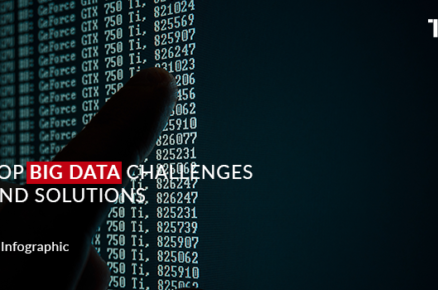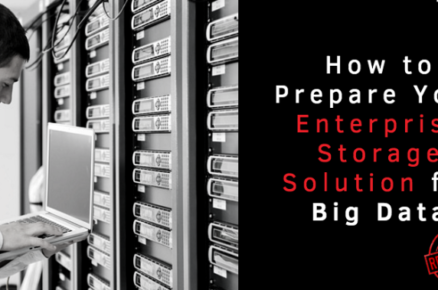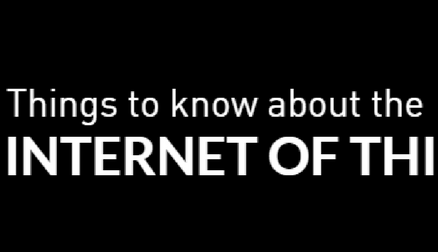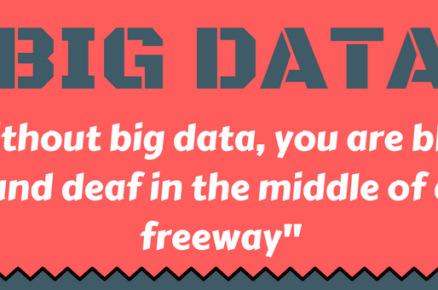While socializing with my partner (something that will abruptly stop for a while after the imminent birth of my second child), when I tell people that I recruit for Big Data & Data Science professionals, their reactions vary from a vacant, glazed look in their eyes to a knowing nod (that actually masks a total lack of understanding). It is fair to say that most people don’t really get what Big Data & Data Science is about.
The industry is developing at a rapid pace, with the technology improving month-on-month instead of year-on-year. There is such a buzz about Big Data that the narrative has almost taken on a life of its own – it has become this mythical being that can slay uncertainty and save any business from an untimely end.
That is, unfortunately, not the case, so I thought that it was about time to take a light look at five of the more prevalent myths:
Big Data predicts the future.
Big Data can indeed provide you with a load of numbers to interpret about the future. However, these numbers will be based on the past and their interpretation will very much depend on the questions that were originally asked and the selection of data that was used. Big Data is therefore not 100% accurate as (thus far) there is human involvement in the process, and, as we all know, we all make miscalculations at the best of times.
Big Data is better data.
Actually, the bigger the data, the bigger the potential oversights. If you do not have a precise understanding of which data sets you need to analyse, you won’t know where to start, and it may actually be better to examine the issue on a smaller scale. You don’t need a data lake to understand why sales of umbrellas are spiking in the rain, but no data lake will ever help you to understand this unless you tell it that it is raining and what the consequences are. If data misses assumptions or contains errors, you are in trouble. You need an intelligent model to sift through the data and work out what is genuinely useful. Quantity does not always equal quality.
We’ve missed the Big Data boat.
Too many companies assume that as everyone is talking about Big Data, everyone is taking advantage of Big Data. Gartner produced a survey last year to show that only 13% of large companies n the survey had actually deployed any Big Data solutions. Many more are planning investments in the area (I can testify to that), but you will be far from late to the party. The party is just getting started. Start small, prove the concept with an easy early win and start to build your Big Data team.
Big Data is for big business.
It is true to say that many of our clients are global blue-chips, but I predict that with improvements in technology and cloud computing, SMEs will very soon also be on the Big data trail. Outsourcing Big Data requirements is becoming very popular, and the rise of the “portfolio career” means that there are increasingly more Big Data professionals out there to work with on a more ad-hoc basis. It needn’t be prohibitively expensive or unwieldy to dip your toes into the market to understand the value. We’re also working with an increasing amount of fast growing Start-ups and SMEs – testament to the growth in this area.
The data is too messy.
Let’s face it, a lot of enterprise data is in a bit of a state. Companies haven’t needed to put it to work at this scale previously, but there are a whole raft of tools to help clean it up. Master data management and data governance software is capturing and cleaning the required information so that only the useful stuff stays in the frame. With analysis and visualization tools becoming ever more user-friendly, more people than ever before are able to gain insights from the Big Data process. There is lots of bad data out there, but there are many ways to combat it.
Big Data can create self-learning algorithms
False positives from rogue data (for example, call centre call volume prediction from direct response TV ads) indicate the limits of automated models from a marketing perspective. Rogue data from a Super Bowl weekend could distort an auto-update algorithm.
When set up in the right way, algorithms can be very powerful, but they always require human intervention. Cell phone operators, for example, have demonstrated good use of non-marketing data for marketing. They know who your friends are, they can guess your age, they know the parts of town where you hang out, they know what websites you visit, what apps you use, and when. Insurance companies can use telemetrics for obtaining data for marketing, not just underwriting.
At bottom, debunking these myths is about discarding blind faith that the formulae for business success are set down in the data. Truth is, Big Data is a tool in itself, like a computer or smartphone – an awesome, game-changing tool, but only when wielded by people who know the right commands and coordinates.
Source :
http://goo.gl/es8Acg
http://goo.gl/BTJLHj












